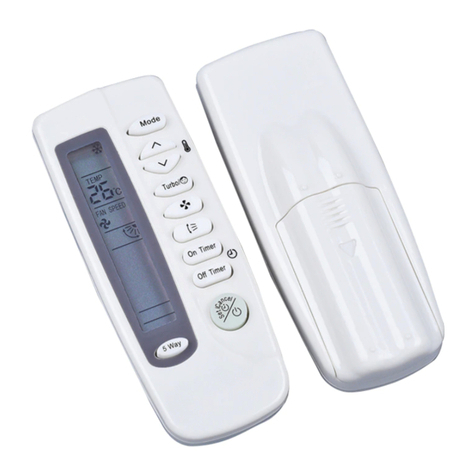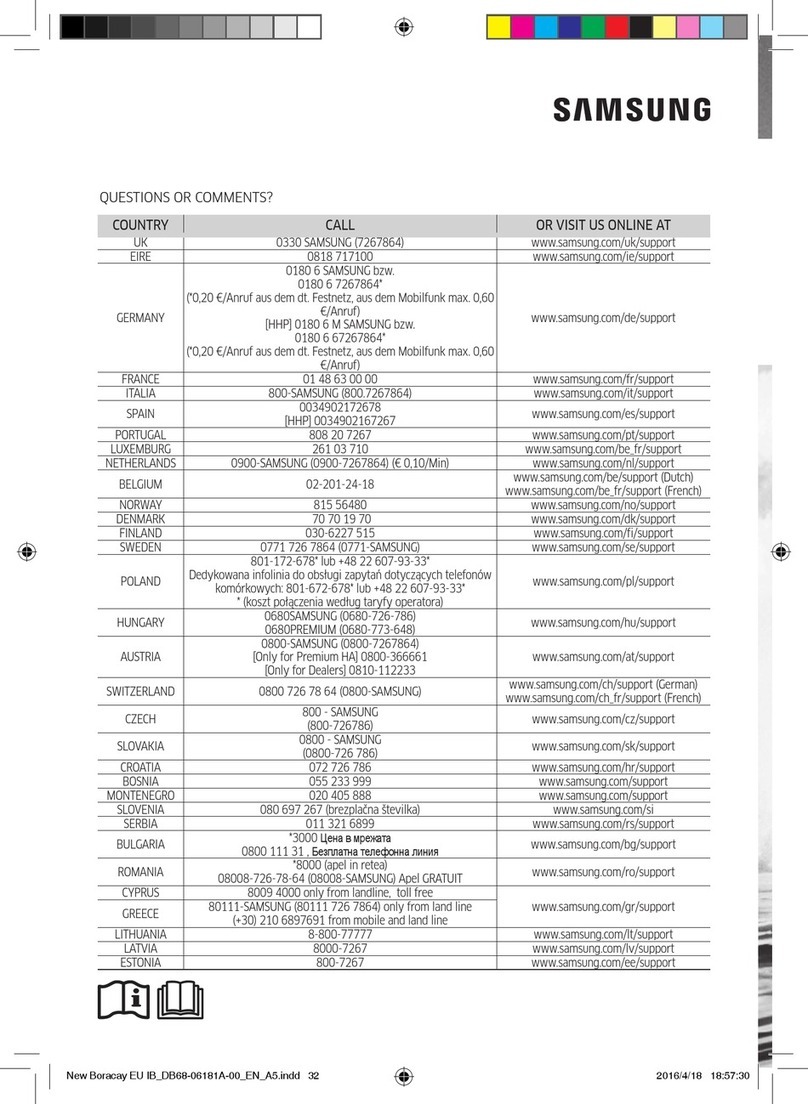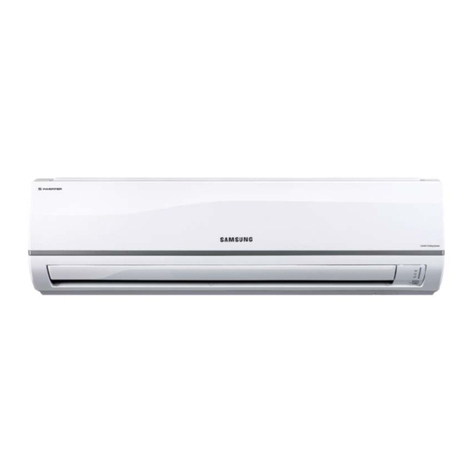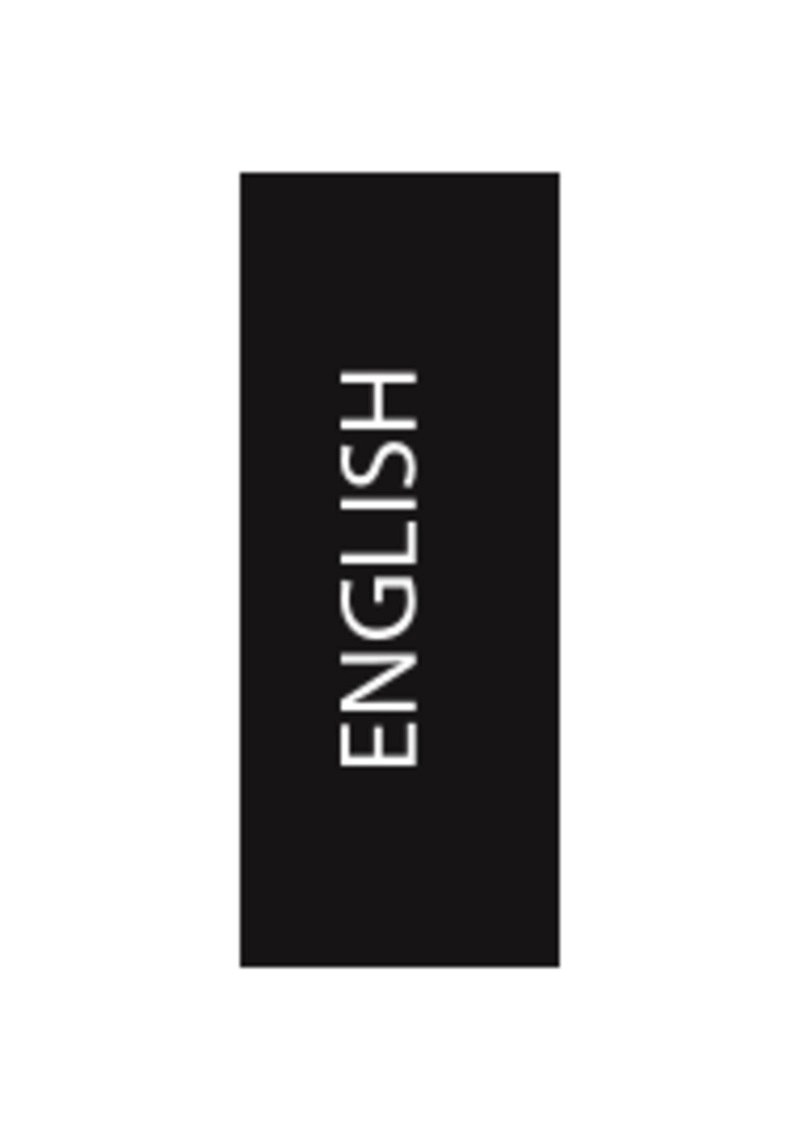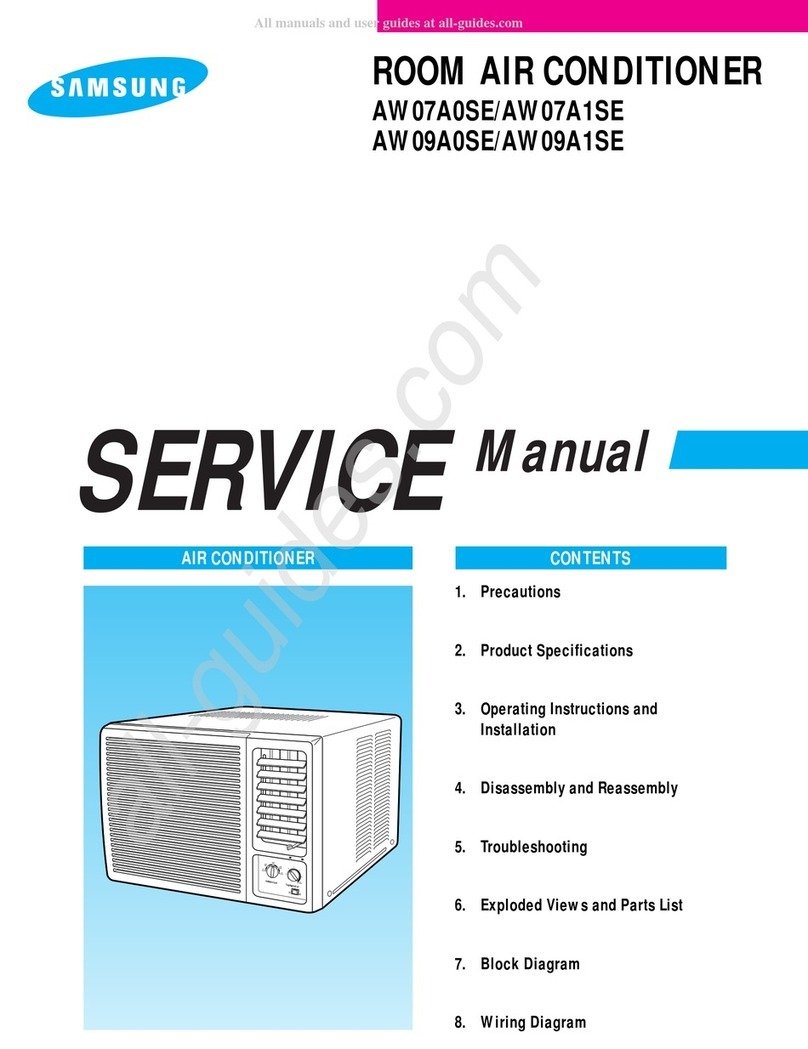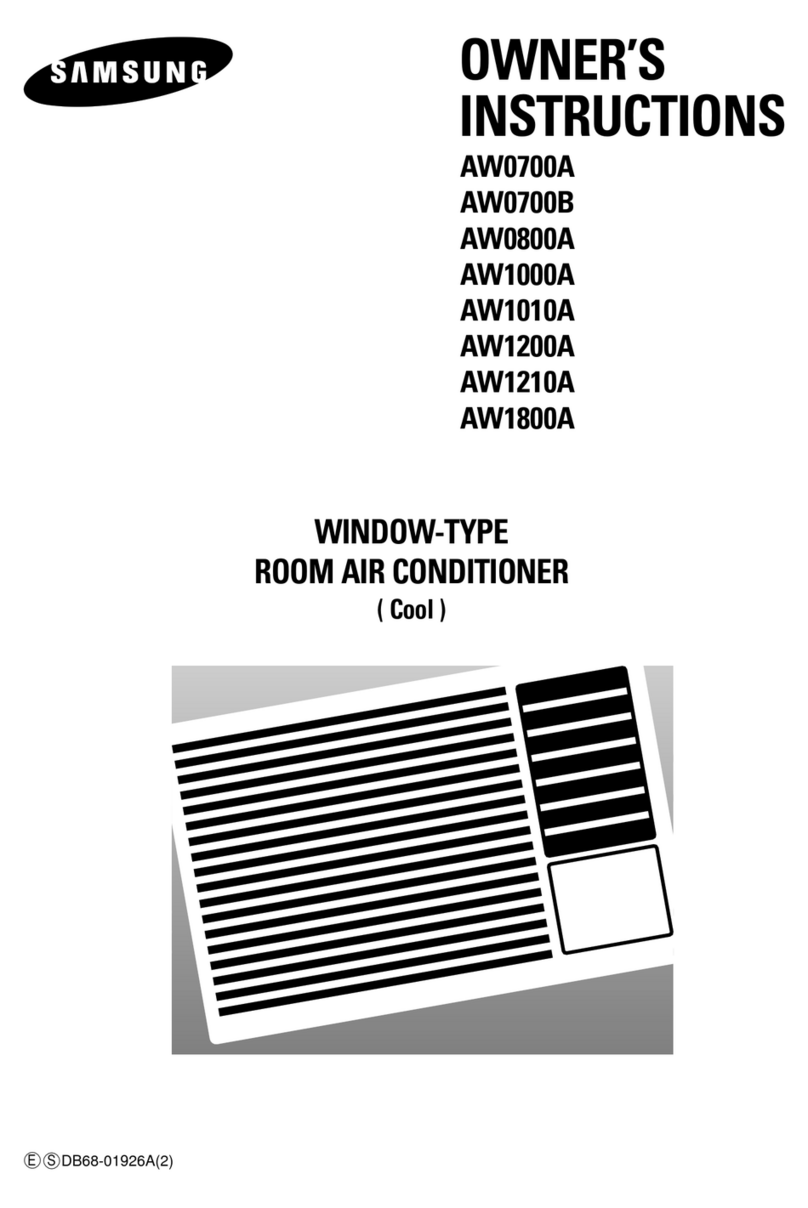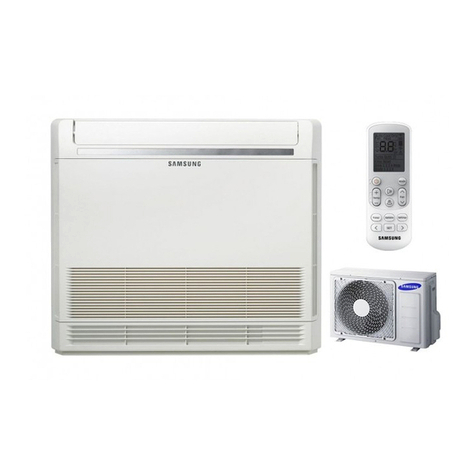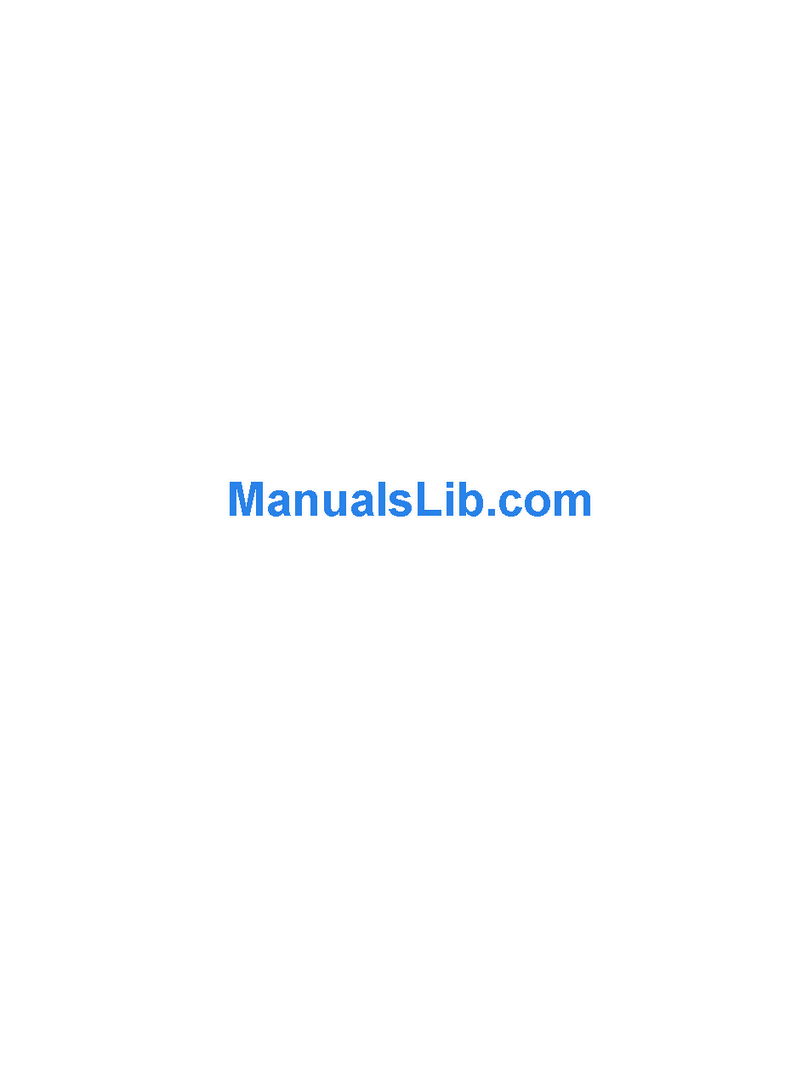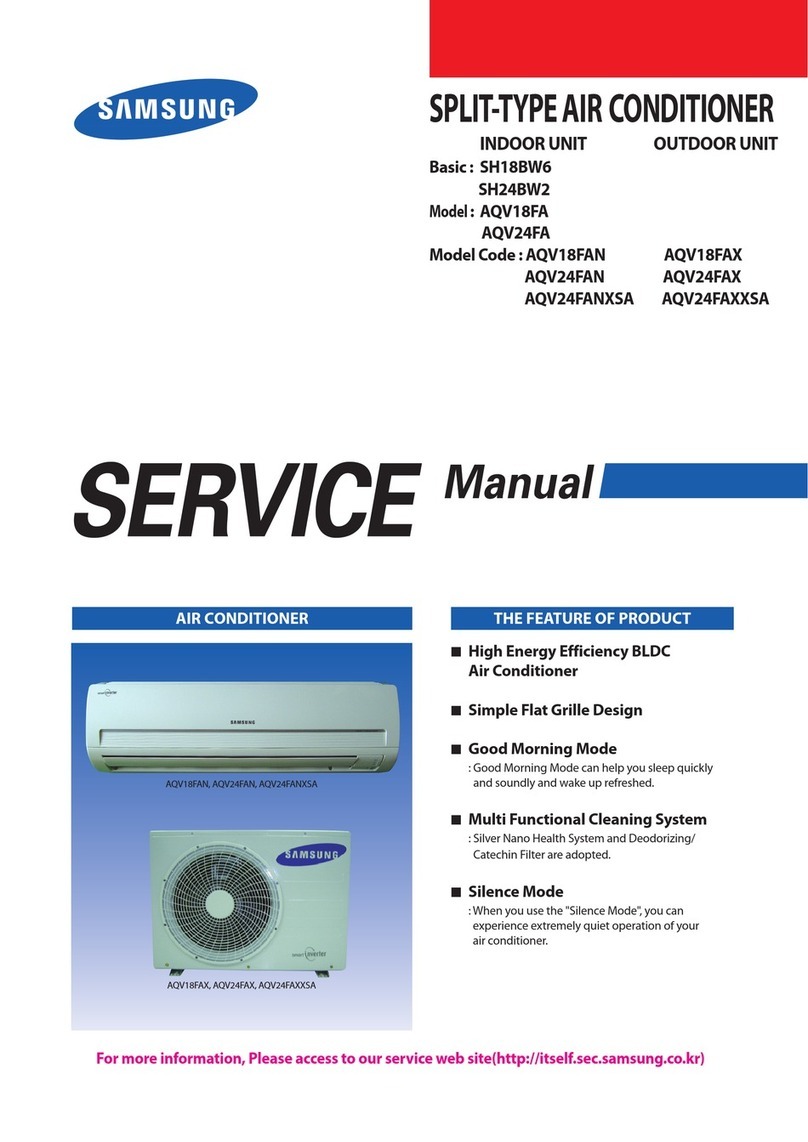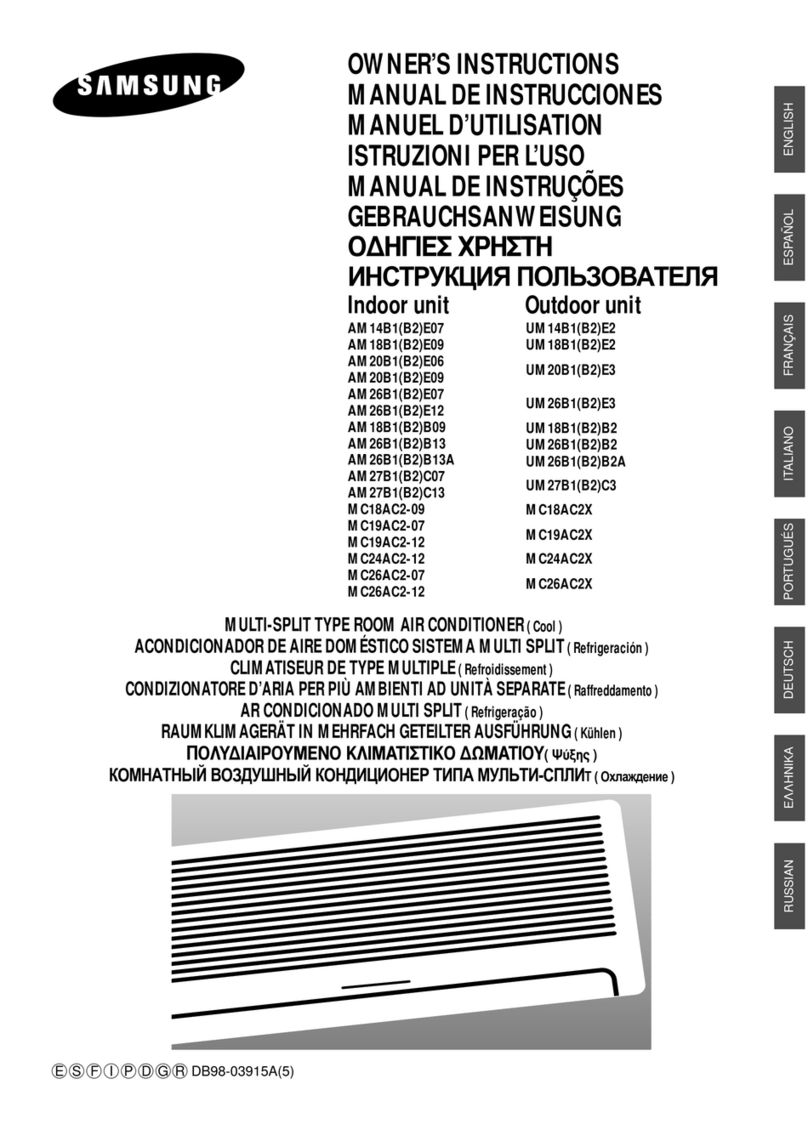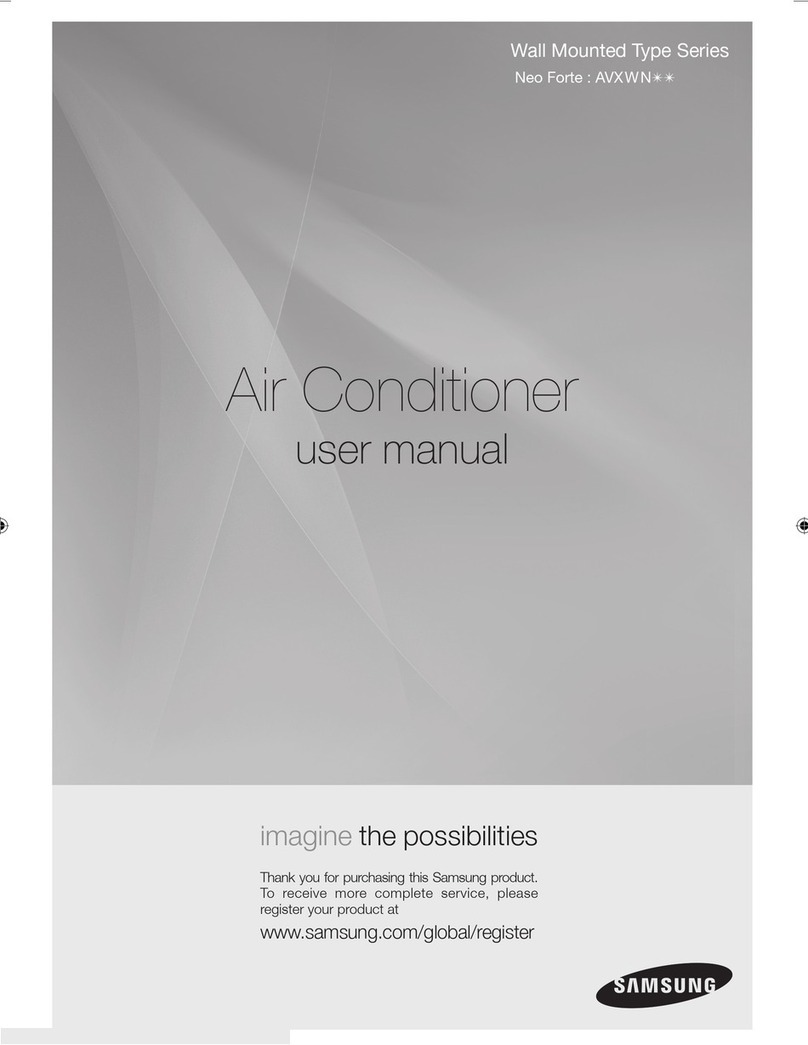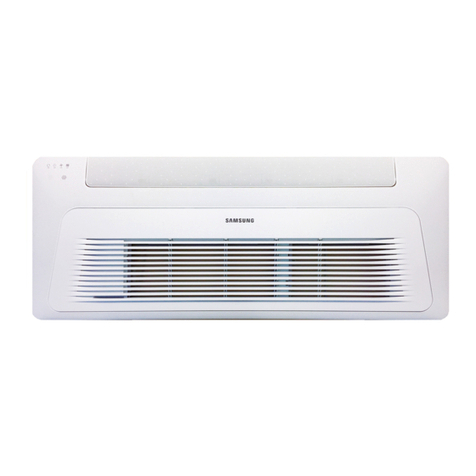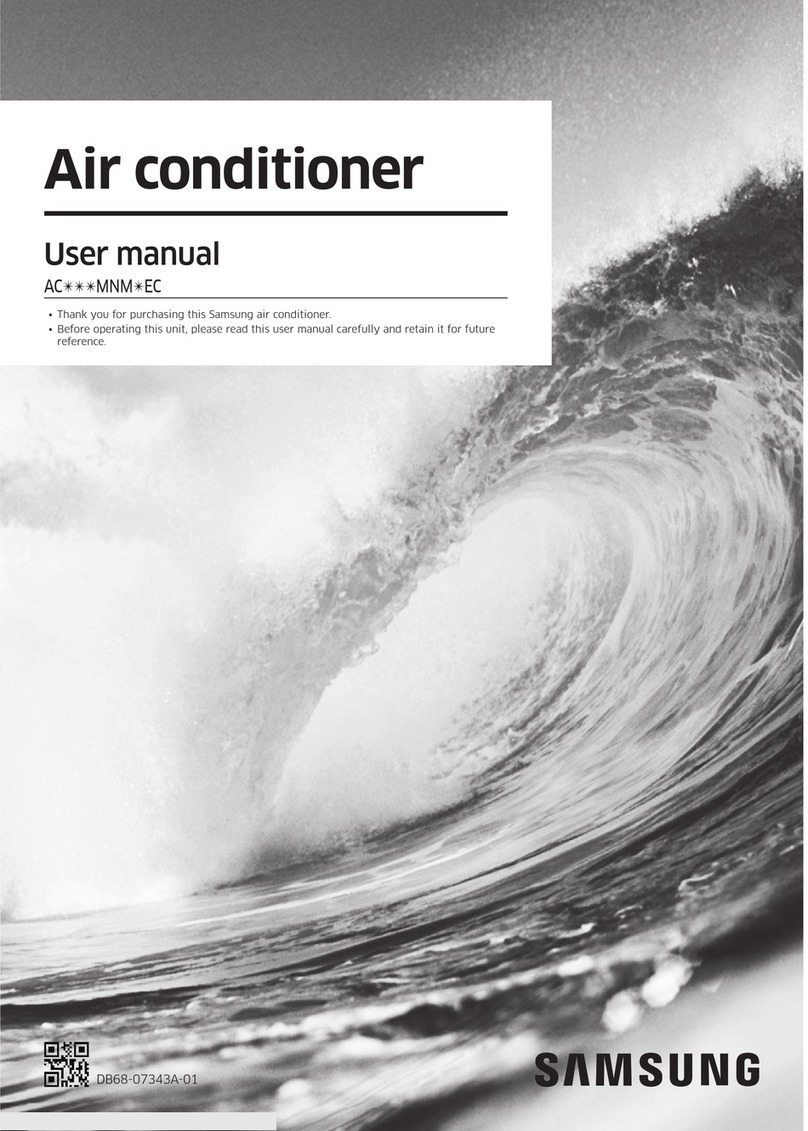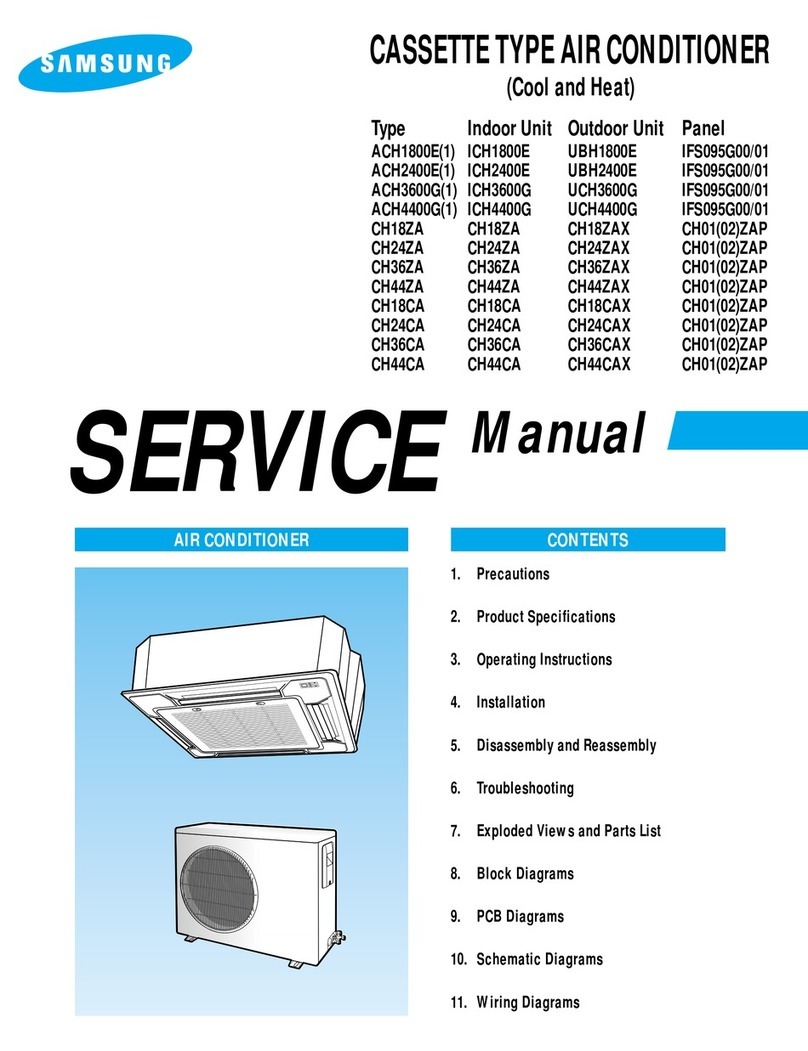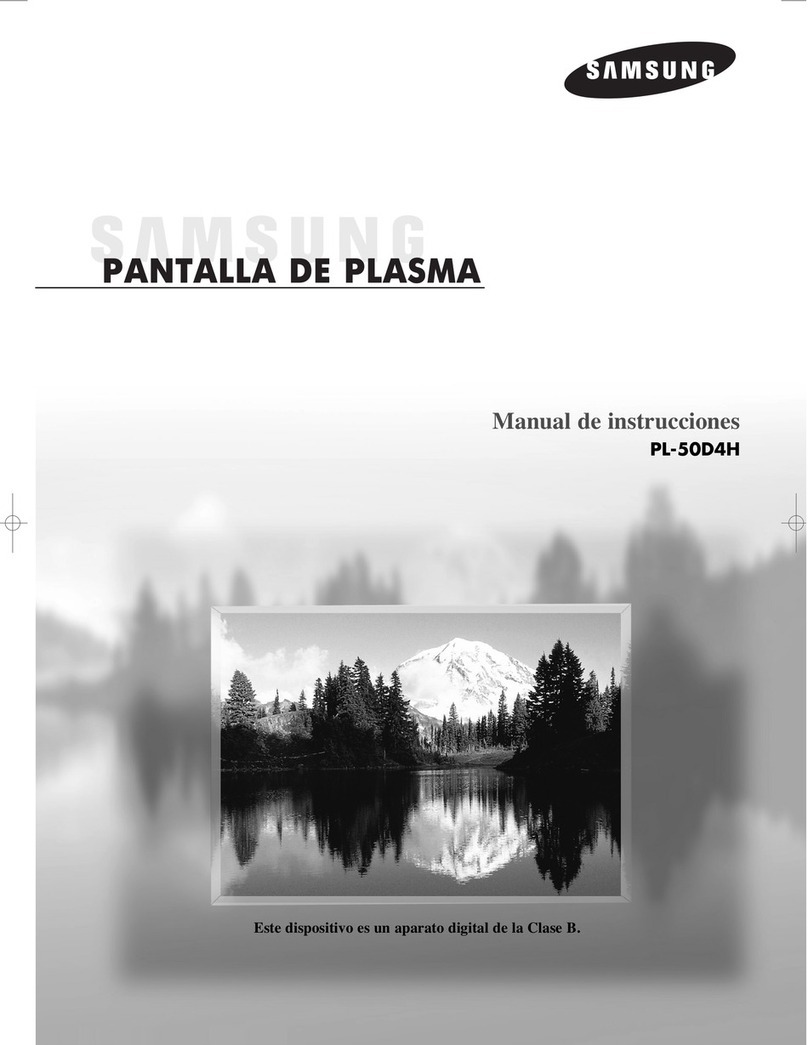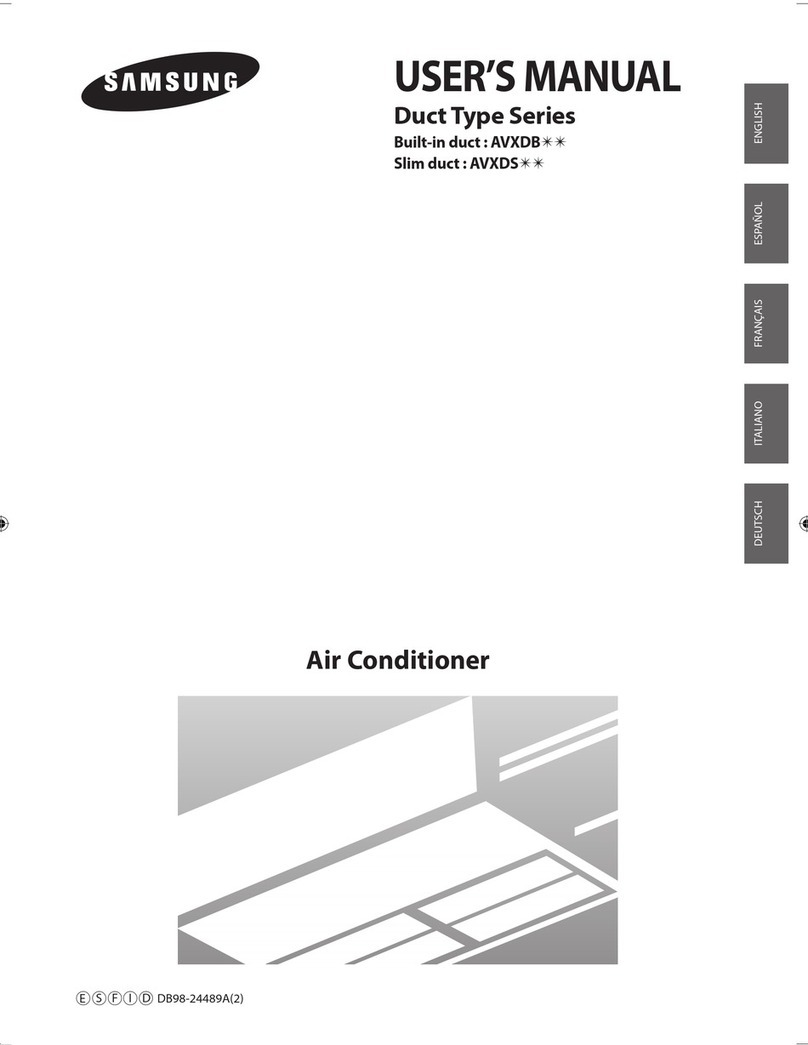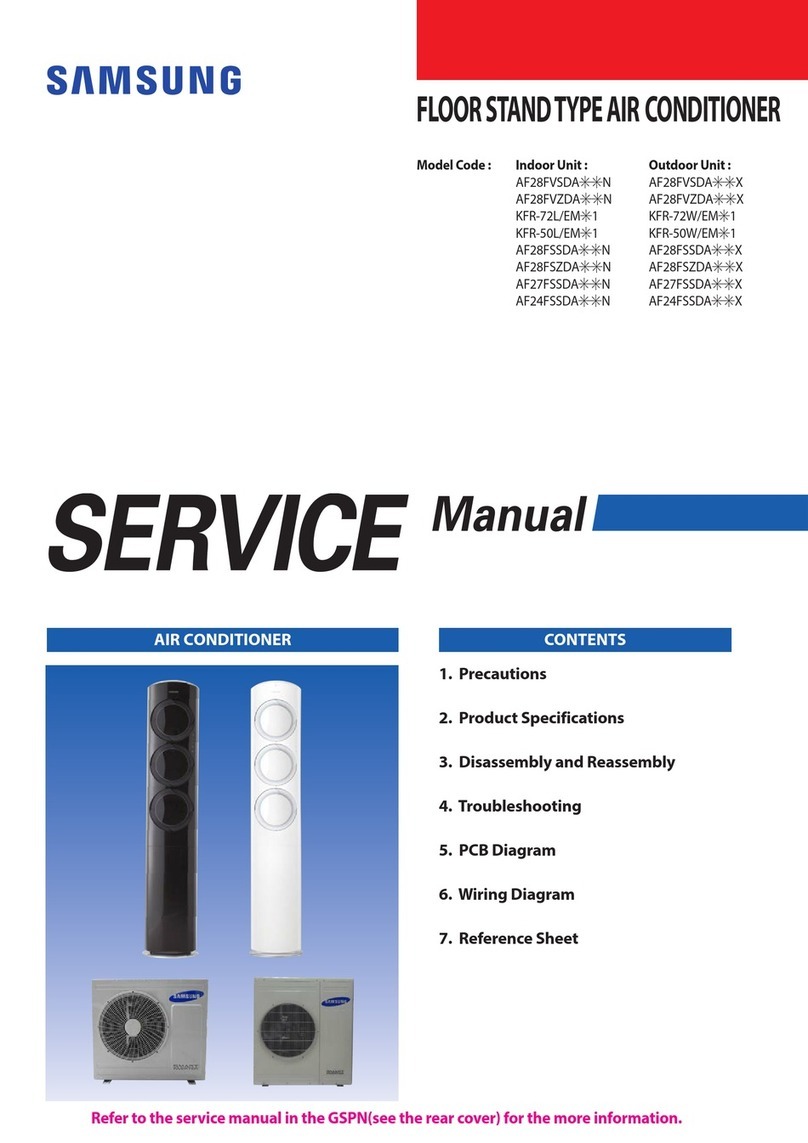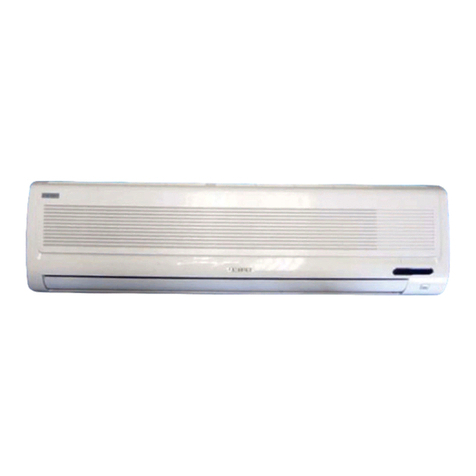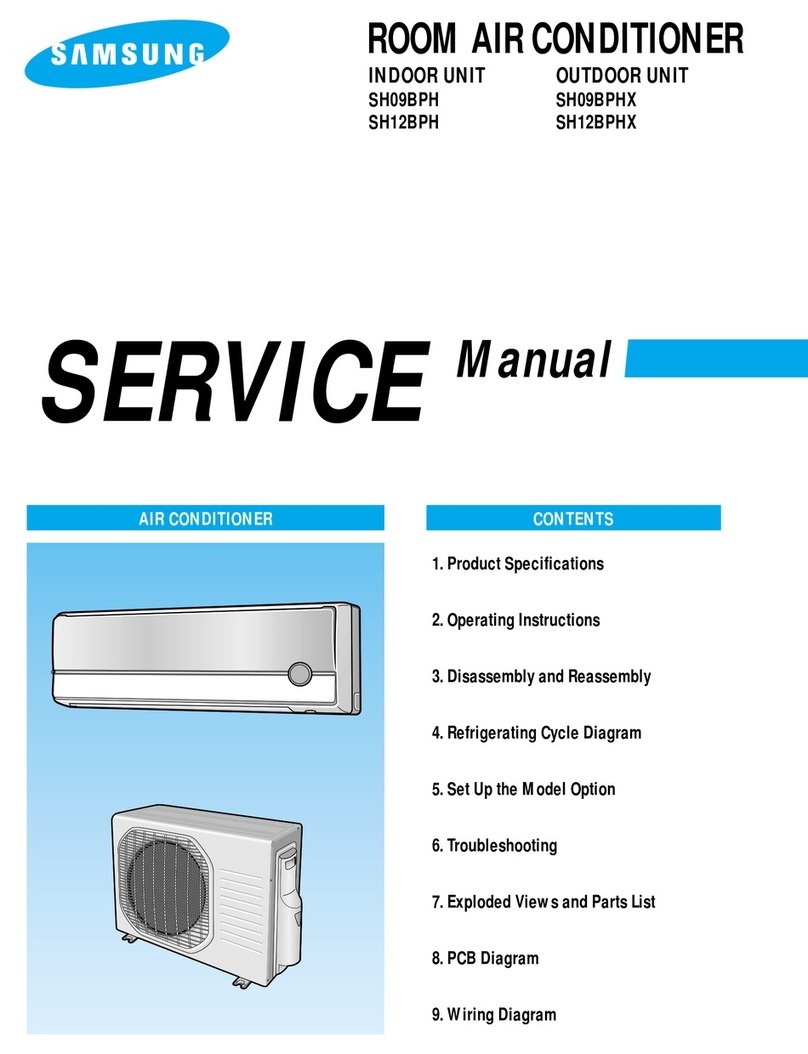
4English
Safety Information
Safety Information
Installing the unit
WARNING
IMPORTANT: When installing the unit, always remember
to connect first the refrigerant tubes, then the electrical
lines.
• Always disassemble the electric lines before the
refrigerant tubes.
• Upon receipt, inspect the product to verify that
it has not been damaged during transport. If the
product appears damaged, DO NOT INSTALL it and
immediately report the damage to the carrier or
retailer (if the installer or the authorized technician
has collected the material from the retailer.)
• After completing the installation, always carry out a
functional test and provide the instructions on how to
operate the air conditioner to the user.
• Do not use the air conditioner in environments with
hazardous substances or close to equipment that
release free flames to avoid the occurrence of fires,
explosions or injuries.
• Do not install the product in a place where
thermohygrostat is needed (such as server room,
machinery room, computer room, etc.) Those places
do not provide guaranteed operation condition of the
product therefore performance can be poor in these
places.
• Do not install the product in a ship or a vehicle
(such as a campervan). Salt, vibration or other
environmental factor may cause the product
malfunction, electric shock or fire.
• Our units should be installed in compliance with the
spaces shown in the installation manual, to ensure
accessibility from both sides and allow repairs
or maintenance operations to be carried out. The
unit’s components should be accessible and easy to
disassemble without endangering people and objects.
For this reason, when provisions of the installation
manual are not complied with, the cost required to
access and repair the units (in SAFETY CONDITIONS,
as set out in prevailing regulations) with harnesses,
ladders, scaffolding or any other elevation system
will NOT be considered part of the warranty and will
be charged to the end customer.
• Auxillary devices which may be a protential ignition
source shall not be installed in the duct work.
Do not install the air conditioner in following places.
• Place where there is mineral oil or arsenic acid. Resin
parts flame and the accessories may drop or water
may leak. The capacity of the heat exchanger may
reduce or the air conditioner may be out of order.
• The place where corrosive gas such as sulphuric acid
gas generates from the vent pipe or air outlet.
• The copper pipe or connection pipe may corrode and
refrigerant may leak.
• The place where there is a machine that generates
electromagnetic waves. The air conditioner may not
operate normally due to control system.
• The place where there is a danger of existing
combustible gas, carbon fibre or flammable dust.
• The place where thinner or gasoline is handled. Gas
may leak and it may cause fire.
• The place where is close to heat sources.
• Do not use the indoor unit for preservation of food
items, plants, equipment, and art works. This may
cause deterioration of their quality.
• Do not install the indoor unit if it has any drainage
problem.
Power supply line, fuse or circuit
breaker
WARNING
• Always make sure that the power supply is compliant
with current safety standards. Always install the air
conditioner in compliance with current local safety
standards.
• Always verify that a suitable grounding connection is
available.
• Verify that the voltage and frequency of the power
supply comply with the specifications and that the
installed power is sufficient to ensure the operation
of any other domestic appliance connected to the
same electric lines.
• Always verify that the cut-off and protection switches
are suitably dimensioned.
• Verify that the air conditioner is connected to the
power supply in accordance with the instructions
provided in the wiring diagram included in the
manual.
• Always verify that electric connections (cable entry,
